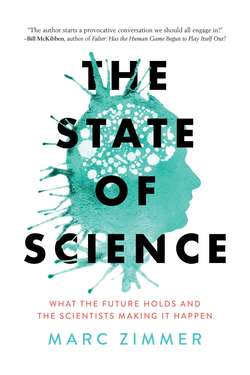Читать книгу The State of Science - Marc Zimmer - Страница 17
На сайте Литреса книга снята с продажи.
“The Leaky Pipeline”
ОглавлениеThe disproportionately low number of female Nobel laureates in the sciences and the absence of black science laureates is an extreme example of the “leaky pipeline” in science. The NSF coined the phrase for this phenomenon in the 1980s. It comes from a report in which the NSF also predicted an upcoming shortage of scientists and engineers that would grow to over 500,000 by 2006. The shortage never materialized, but the metaphor stuck. It presents a vivid visual image of women and people of color entering the sciences but then “leaking out of the pipeline” at greater rates than white males as they progress along their educational and career paths. This pipeline should lead to awards and board memberships in science, the ultimate being the Nobel Prizes, but the number of women and people of color consistently decreases as we move along the pipeline. More than 14,000 academic articles have been written about the “leaky pipeline.”[28] However, while the phrase is also very popular with the media and politicians, it is a flawed metaphor. Although it is often used in connection with a perceived future shortage of scientists, it is less commonly used to show the need for increased diversity and equitable representation in STEM, the more important pressing problem. At the same time, a leaky, dripping pipeline has the obvious negative connotations of a dysfunctional pipe; it implies that there is a single direct pathway from preschool to PhD, and that the PhD is a more valuable endpoint than other educational degrees.[29] Although the leaky pipeline is not necessarily a good metaphor, it certainly describes something real. Therefore, I use the phrase in this chapter, although I place it in quotes to acknowledge its inadequacy.
The percentages of women decrease from a bachelor’s degree to a PhD, tenure, full professorship, and major awards in the sciences. A 2015 NSF report shows that women accounted for 45 percent of PhDs in the STEM fields. The percentage falls to 42 percent for female junior faculty members and to 30 percent for female senior faculty members.[30] A similar drop-off is observed in biotech companies, where women just hold 20 percent of leadership roles and 10 percent of board seats. Chemistry & Engineering News reviewed the boards of 75 biotech companies that had raised series A funding since 2016 and found that 39 have only men on their boards, while just 2 have boards with over 30 percent women.[31]
There are numerous reasons for the decrease in the percentage of women in more senior positions and receiving major awards. The remainder of this chapter divides them into three main categories: (1) a structure (PhD, tenure, funding, and publication) that is not compatible with a family life; (2) implicit biases against women by other scientists (both men and women); and (3) a system that favors men and masculine confidence.
